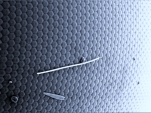 |
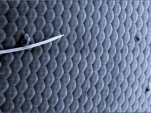 |
|
| 1a | 1b |
Butterflies have remarkably big compound eyes with exeptionally many ommatidia. While dragonflies need high-resolution images to catch their prey when flying one expects butterflies to have much smaller compound eyes. Perhaps they need high resolution images of their environment to compensate the permanently varying perspective produced by their wobbling flight.
Not only the wings, but even the antennae of butterflies are densely covered with scales, some of which even protect the olfactory pits.
Even the legs are covered with scales. The construction of what is called the "distal claw" is sometimes very complex. Sequence 1 shows that this species has something like a trigonal thumb, covered with peculiarly shaped scales, which forms the counterpart of a pair of claws. In addition the legs are covered with many sensory bristles. The special function is usually unknown, but there is evidence that insects can not only detect mechanical influences with these bristles, but vibrations of the air. And meanwhile scientists have found out, that butterflies (and probably many other insects) can even detect electrostatic fields with their sensory bristles!
We all admire the splendid colors of butterflies. These colors are caused by tiny scales which cover both sides of the wings. Usually these scales contain pigments but sometimes brillant colors are a consequence of spectral interference, as the textures of the scales are of the same magnitude as light waves. Even a simple bright field microscope shows the variety of shapes, but you need a SEM to study the structures adequately. The microscope usually shows narrow parallel grooves only, while the SEM demonstrates that most of the scales are perforated. The tiny gaps have a diameter of about 1 um. Whether these structures have a special function is unknown. Perhaps they help the butterflies to perform their typical wobbling flight, which enables them to escape their enemies.
There may be different types of scales on the same wing. Besides there are often bristles between the scales. Sequence 8 shows non-perforated scales.
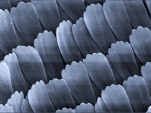 |
 |
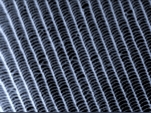 |
|||||
| 1a | 1b | 1c | |||||
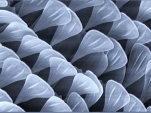 |
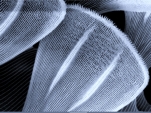 |
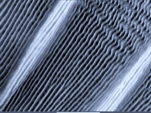 |
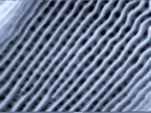 |
||||
| 2a | 2b | 2c | 2d | ||||
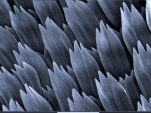 |
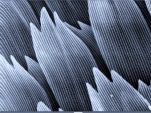 |
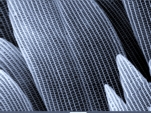 |
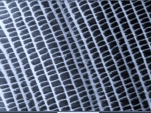 |
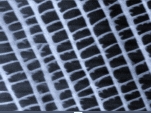 |
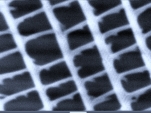 |
||
| 3a | 3b | 3c | 3d | 3e | 3f | ||
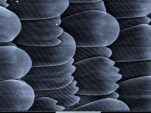 |
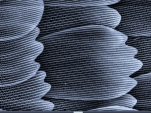 |
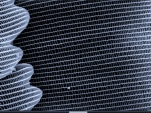 |
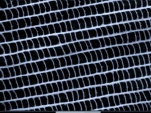 |
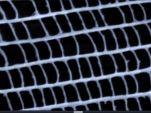 |
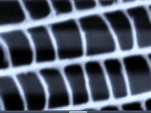 |
||
| 4a | 4b | 4c | 4d | 4e | 4f | ||
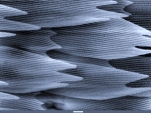 |
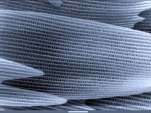 |
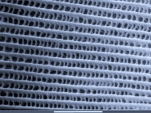 |
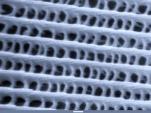 |
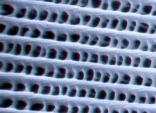 |
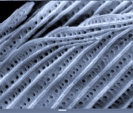 |
||
| 5a | 5b | 5c | 5d | 5d-Stereo (PICOLAY) | |||
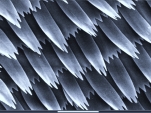 |
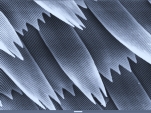 |
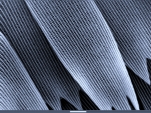 |
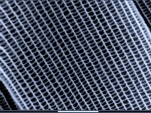 |
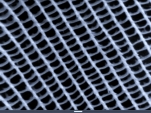 |
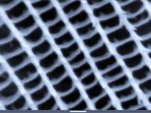 |
||
| 6a | 6b | 6c | 6d | 6e | 6f | ||
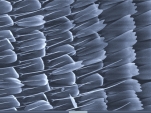 |
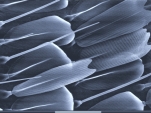 |
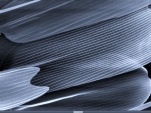 |
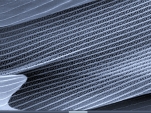 |
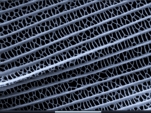 |
 |
||
| 7a | 7b | 7c | 7d | 7e | 7f | ||
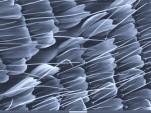 |
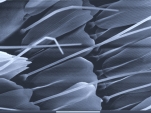 |
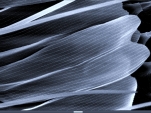 |
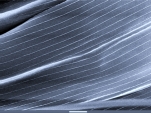 |
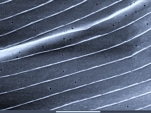 |
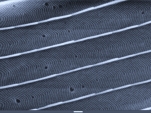 |
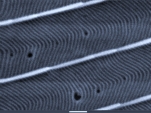 |
|
| 8a | 8b | 8c | 8d | 8e | 8f | 8g | |
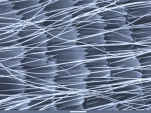 |
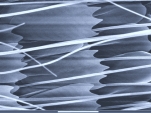 |
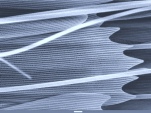 |
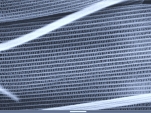 |
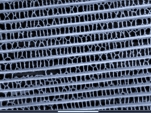 |
|||
| 9a | 9b | 9c | 9d | 9e | |||
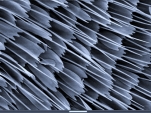 |
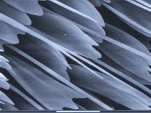 |
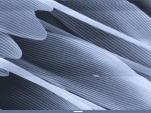 |
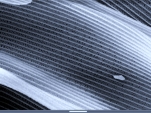 |
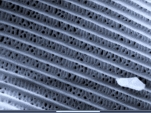 |
|||
| 10a | 10b | 10c | 10d | 10e | |||
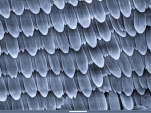 |
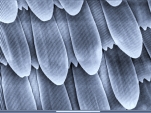 |
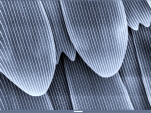 |
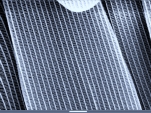 |
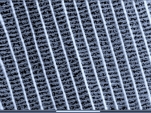 |
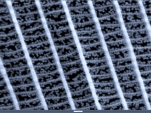 |
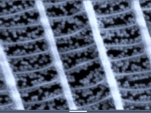 |
|
| 11a | 11b | 11c | 11d | 11e | 11f | 11g | |
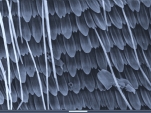 |
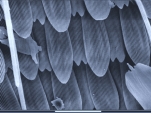 |
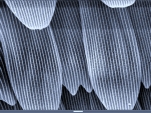 |
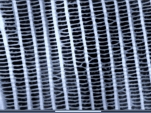 |
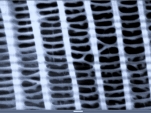 |
|||
| 12a | 12b | 12c | 12d | 12e | |||
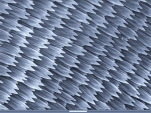 |
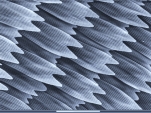 |
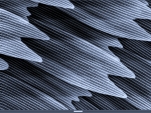 |
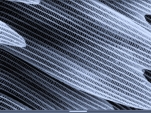 |
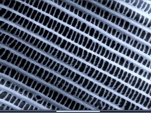 |
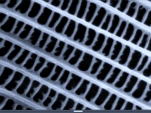 |
||
| 13a | 13b | 13c | 13d | 13e | 13f | ||
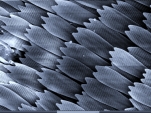 |
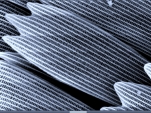 |
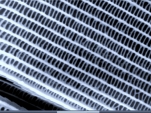 |
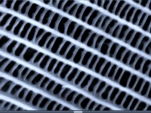 |
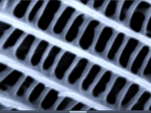 |
|||
| 14a | 14b | 14c | 14d | 14e | |||
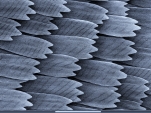 |
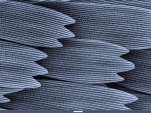 |
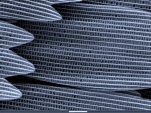 |
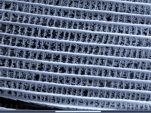 |
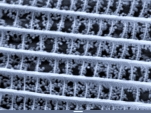 |
|||
| 15a | 15b | 15c | 15d | 15e | |||
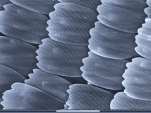 |
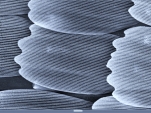 |
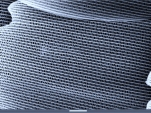 |
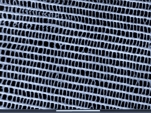 |
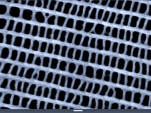 |
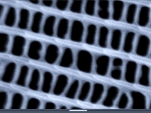 |
||
| 16a | 16b | 16c | 16d | 16e | 16f |
Sequences 11 and 15 demonstrate that the smallest structures have a dimension of about 0,1 um. If you bundle such structures in the densest way possible you can store 10 Billions per square centimeter or about 100 Billions on the wings of a butterfly of average size. Let us assume now that every element represents a memory unit of one Bit: Then you can store 100 Billion Bit or 12,5 Gigabyte on the wings of one butterfly! This number shows in an impressive way the subtle texture of the scales!
To compare the SEM images with images produced with a bright field microscope (100x objective, immersion) click on the link given here: Bright field images of butterfly scales
All images have been sampled down.
<
HOME >
Copyright: webmaster@mikrohamburg.de